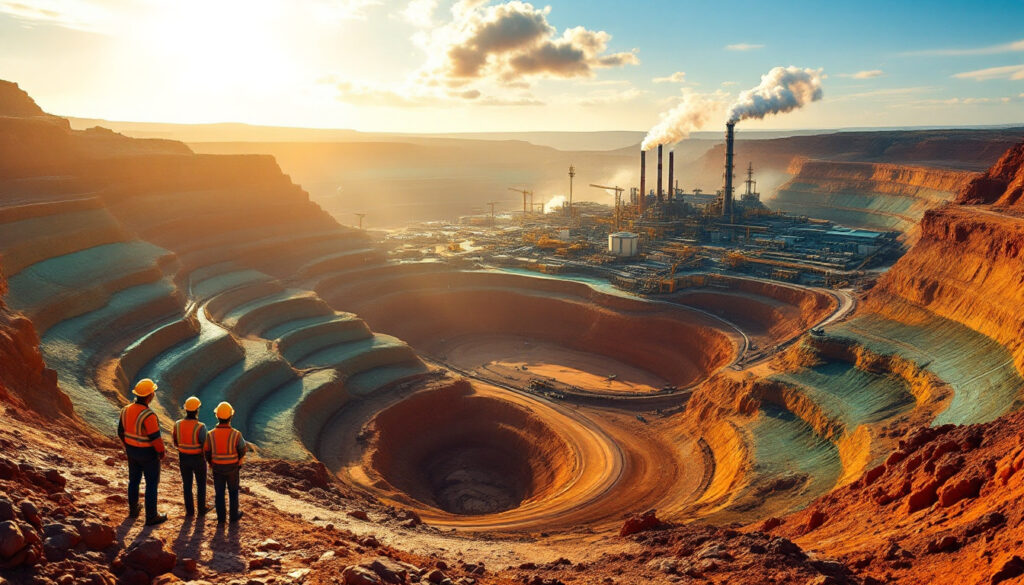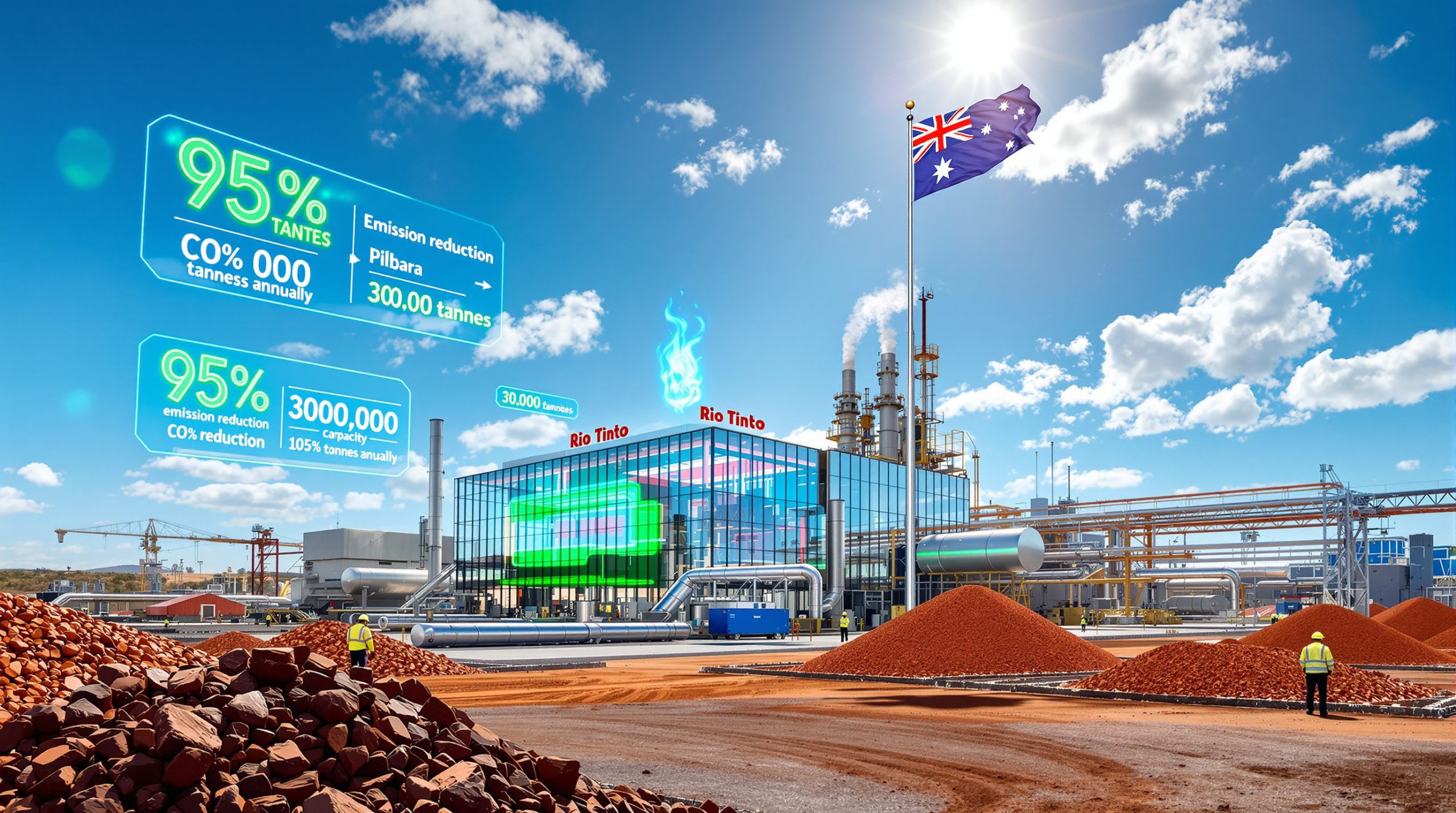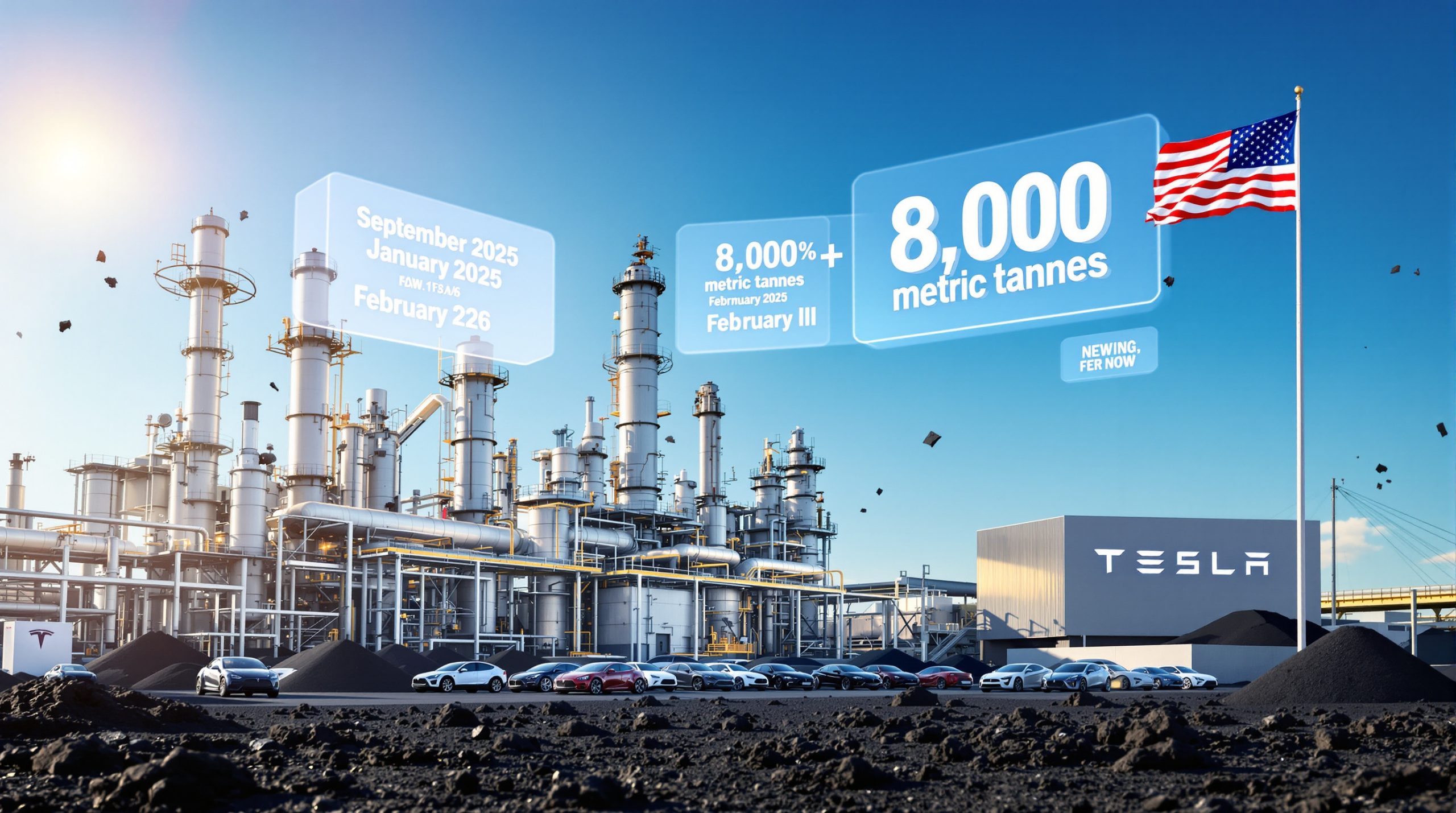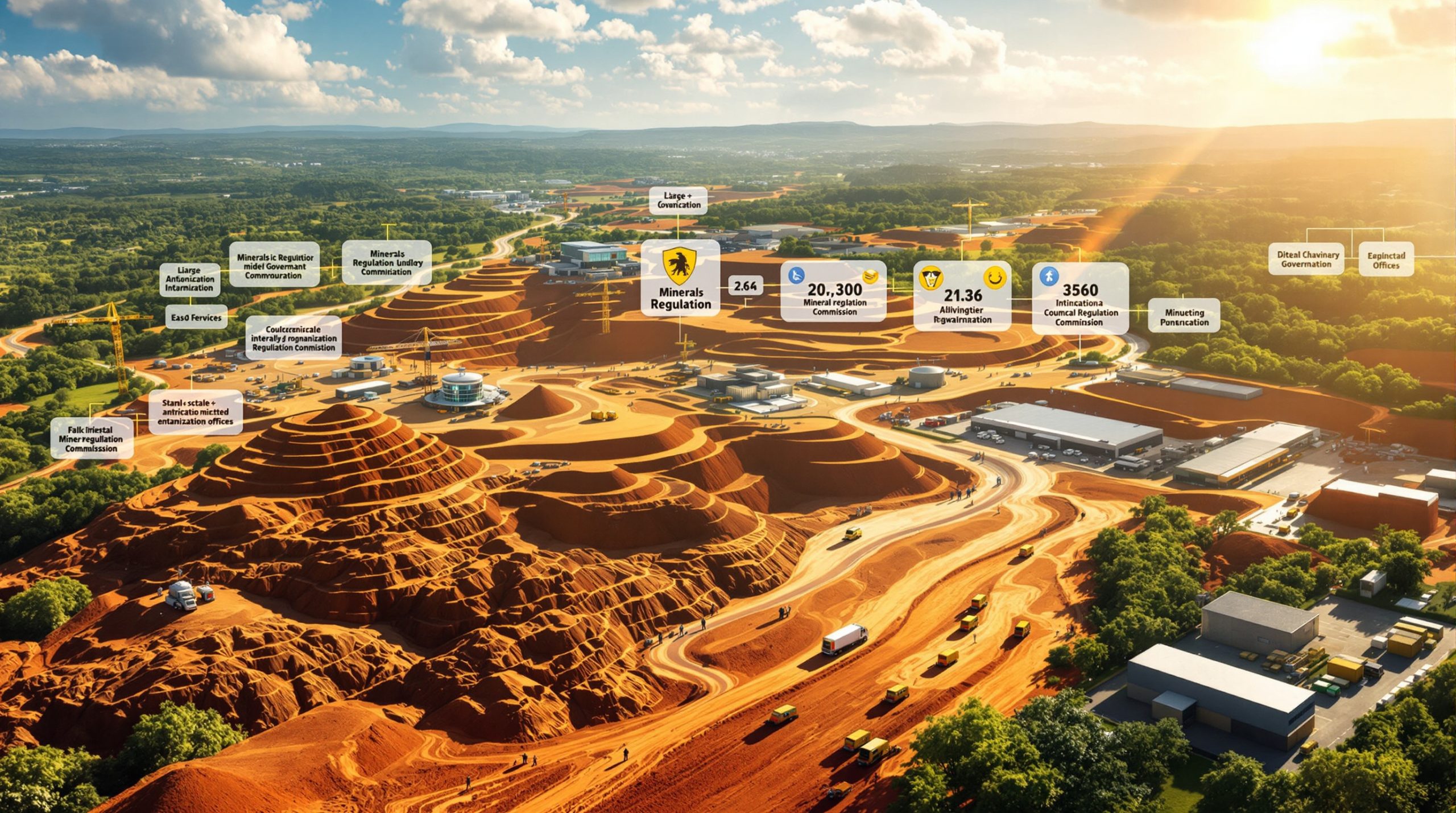Why Is Glencore Seeking Government Support for Its Australian Copper Operations?
The Economic Challenges Facing Glencore's Copper Assets
Glencore's Mount Isa copper smelter and Townsville refinery face existential threats due to a confluence of economic pressures. The company reports confronting "the largest drops in treatment and refining charges in 25 years," with charges falling to historic lows driven by oversupply in global smelting capacity. These charges, which represent the fees paid to process raw copper ore into refined metal, have plummeted by approximately 40% since 2020, eroding profit margins.
Competition has intensified dramatically, with heavily subsidized smelters in China and Indonesia operating with substantial state-backed financial support, enabling them to undercut competitors globally. Chinese smelters benefit from government electricity subsidies averaging $0.03–0.05 per kWh, compared to Australia's industrial rates of $0.10–0.15 per kWh. This disparity creates an uneven playing field, as Glencore's operational costs remain 20–30% higher than Asian rivals.
Sam Strohmayr, Glencore's Chief Operating Officer for Australian zinc and copper assets, emphasized that without intervention, these facilities risk closure, which would eliminate 20% of Australia's copper refining capacity. The economic viability of these assets is further strained by aging infrastructure; the Mount Isa smelter, commissioned in 1961, requires A$500 million in modernization investments to meet current environmental and efficiency standards.
The Mount Isa Copper Mines Closure Timeline
Glencore announced in October 2023 that the Mount Isa underground copper mines will cease operations in the second half of 2025, following geotechnical studies confirming the depletion of commercially viable ore bodies. This decision aligns with a 15-year decline in ore grades, which have fallen from 2.5% copper in 2010 to 0.8% in 2025, necessitating deeper and costlier extraction.
The closure will directly impact 1,200 jobs initially, though revised estimates by Strohmayr suggest 500 permanent redundancies after redeployment efforts. The phased shutdown includes decommissioning the Enterprise, X41, and Black Rock underground mines, which collectively produced 120,000 tonnes of copper annually.
Industry analysts note that Mount Isa's closure is particularly significant as it occurs during a period when global demand for copper is projected to increase by 50% by 2035, driven by renewable energy infrastructure and electric vehicle production. The timing creates a strategic vulnerability in Australia's industrial capability just as top copper mines' production trends and industry insights become increasingly critical to the energy transition.
What Impact Will the Copper Assets Restructuring Have on Employment?
Workforce Reduction and Redeployment Efforts
Glencore's restructuring will affect 500 employees, down from initial projections of 1,200, due to cross-functional redeployment to coal and zinc operations in Queensland. The company has established a A$10 million retraining fund to transition workers into roles such as electric vehicle maintenance and renewable energy projects.
Strohmayr noted that 60% of affected staff have expressed interest in relocating to Glencore's McArthur River zinc mine, though this requires reskilling programs accredited by the Australian Qualifications Framework. These programs, developed in partnership with TAFE Queensland, focus on transferable mining skills and future-oriented competencies in automation and digital systems management.
For employees unable or unwilling to relocate, Glencore has partnered with local employers to establish a job-matching platform. The company is also providing enhanced severance packages that include extended healthcare benefits and relocation allowances for those seeking opportunities outside the Mount Isa region.
Community Engagement and Transition Planning
Glencore has convened monthly town halls in Mount Isa since November 2023, engaging 85% of the local workforce in transition planning. The company collaborates with the Queensland government on a regional economic diversification plan, prioritizing investments in solar farms and critical mineral processing.
However, community advocates argue that the loss of A$150 million in annual wages will depress local businesses, with the Mount Isa Chamber of Commerce forecasting a 12% drop in retail revenue. Local housing markets have already seen a 5% decrease in property values since the announcement, creating concerns about a broader economic contraction in the region.
Mount Isa Mayor Shannon Sweeney has called for accelerated infrastructure projects to absorb displaced workers, including the proposed North West Queensland Renewable Energy Zone. This project could potentially create 300 construction jobs and 120 permanent positions in operations and maintenance, partially offsetting the mining job losses.
How Does This Fit Into the Broader Trend of Mining Companies Reconsidering Australian Operations?
The Growing Pattern of International Miners Reassessing Australian Assets
Glencore follows Trafigura's March 2025 strategic review of the Nyrstar zinc smelter in Tasmania, which faces analogous cost pressures. Collectively, these moves highlight Australia's declining competitiveness in mineral processing, with energy costs 50% higher than the Middle East and tax rates 10% above Canada's.
Richard Holtum, Trafigura's CEO, frames smelters as "national security infrastructure," arguing that without state support, Western nations will remain dependent on China for 80% of refined copper. This perspective represents a significant shift in how mining executives publicly position their operations – moving from purely commercial entities to strategic national assets deserving of government protection.
The trend extends beyond copper and zinc. In the past 18 months, three major aluminum smelters have announced reviews of Australian operations, citing similar concerns about energy costs and international competition. This pattern raises fundamental questions about current trends and economic challenges in Australia's mining sector and its ability to maintain a domestic processing industry for its abundant mineral resources.
The National Security Dimension of Mineral Processing
The framing of mineral processing as a national security concern represents a strategic pivot by mining executives seeking government support. Holtum's argument that "unless governments provided more support, the West would never reduce its dependence on China for supplies of critical minerals" directly connects commercial viability with geopolitical objectives.
This perspective has gained traction within defense and strategic policy circles, with the Australian Strategic Policy Institute publishing a 2023 report identifying mineral processing capabilities as "sovereign industrial capacity" essential to economic resilience during supply chain disruptions.
For copper specifically, the security dimension is amplified by its essential role in defense applications, renewable energy infrastructure, and telecommunications. Australia's Department of Defence has identified refined copper as a critical input for 37 different defense-related manufacturing processes, making domestic supply chains strategically valuable beyond their commercial worth.
What Are the Global Competitive Factors Affecting Australian Copper Processing?
International Subsidies and Market Distortions
Chinese smelters receive $1.2 billion annually in direct subsidies, enabling them to dominate 60% of global refining capacity. Indonesia's recent entry into copper processing, backed by tax holidays and export bans on raw ore, has further destabilized markets. The LME copper price has stagnated at $8,500–9,000/tonne, insufficient to justify capital-intensive Australian operations.
These subsidies take various forms, including reduced electricity rates, land grants, tax exemptions, and preferential financing. Chinese copper processors benefit from electricity rates approximately 60% lower than Australian operators, representing a structural cost advantage difficult to overcome through operational efficiencies alone.
Indonesia's strategy has been particularly disruptive to established market dynamics. By implementing a complete ban on unprocessed copper exports in 2023, Indonesia effectively forced mining companies to build domestic smelting capacity or cease operations. This policy, combined with a 10-year corporate tax holiday for new smelters, has rapidly established Indonesia as a major processing hub that directly competes with Australian facilities.
Critical Minerals Supply Chain Vulnerabilities
The potential closure of Glencore's assets would increase Australia's dependence on Chinese processing at a time when copper's strategic importance continues to grow. Each megawatt of solar power requires approximately 4.5 tonnes of copper, while offshore wind installations need 9.6 tonnes per megawatt.
Australia currently processes only 27% of the copper it mines domestically, with the remainder exported as concentrate. The closure of Mount Isa and Townsville facilities would reduce this to approximately 15%, increasing vulnerability to supply chain disruptions and reducing value capture from Australia's natural resources.
Copper's classification as a critical mineral by both the Australian and US governments acknowledges its strategic importance to defense applications, renewable energy, and advanced manufacturing. However, unlike lithium and rare earths, copper processing has received less policy attention despite its fundamental importance to electrification and the energy transition. According to Mining.com's analysis of the battery metals market, this strategic oversight could prove costly as demand continues to surge.
What Options Might the Australian Government Consider?
Potential Government Support Mechanisms
Options under discussion include production tax credits of A$500/tonne for locally refined copper, low-interest loans covering 50% of modernization costs, and co-investment in renewable energy microgrids to reduce electricity expenses by 40%.
The production tax credit model draws inspiration from the US Inflation Reduction Act, which provides substantial incentives for domestic manufacturing of clean energy components. This approach would directly improve the economics of copper processing without requiring direct government ownership or operation of assets.
Energy cost reduction represents perhaps the most significant opportunity, as electricity accounts for approximately 35% of copper refining costs. The Queensland government has proposed a special industrial electricity tariff for critical minerals processing, potentially reducing costs by A$25-30 per megawatt-hour through direct subsidies and priority access to state-owned renewable generation.
Balancing Economic and Strategic Considerations
Any government intervention must carefully balance immediate fiscal impacts against long-term strategic benefits. The precedent set by supporting Glencore could trigger similar requests from other sectors facing international competition, creating policy challenges around selectivity and criteria for support.
Environmental considerations also factor significantly into the decision matrix. Modern copper processing technologies can reduce emissions by up to 40% compared to older facilities like Mount Isa, making modernization investments potentially aligned with climate objectives if properly structured.
The national interest calculation extends beyond direct employment and tax revenue to consider supply chain resilience, technology development, and sovereign industrial capability. A comprehensive approach would integrate copper processing support into a broader critical minerals strategy that addresses the entire value chain from mining through refining to manufacturing.
Western Australia's recent success with its Future Battery Industry Strategy provides a potential model, having attracted over A$7 billion in downstream processing investments through coordinated policy instruments including shared infrastructure, streamlined approvals, and research partnerships. Additionally, federal grants driving Australia's critical minerals industry could play a vital role in supporting Glencore's operations.
The situation is further complicated by the strategic impacts of copper mergers and acquisitions and political dynamics influencing global commodity markets, which create additional layers of complexity for both Glencore and Australian policymakers as they navigate this challenging landscape.
Looking for the Next Major Mineral Discovery?
Discovery Alert's proprietary Discovery IQ model instantly identifies significant ASX mineral discoveries, transforming complex data into actionable investment insights for both copper and other commodities. Explore why historic discoveries can generate substantial returns by visiting Discovery Alert's dedicated discoveries page today.




